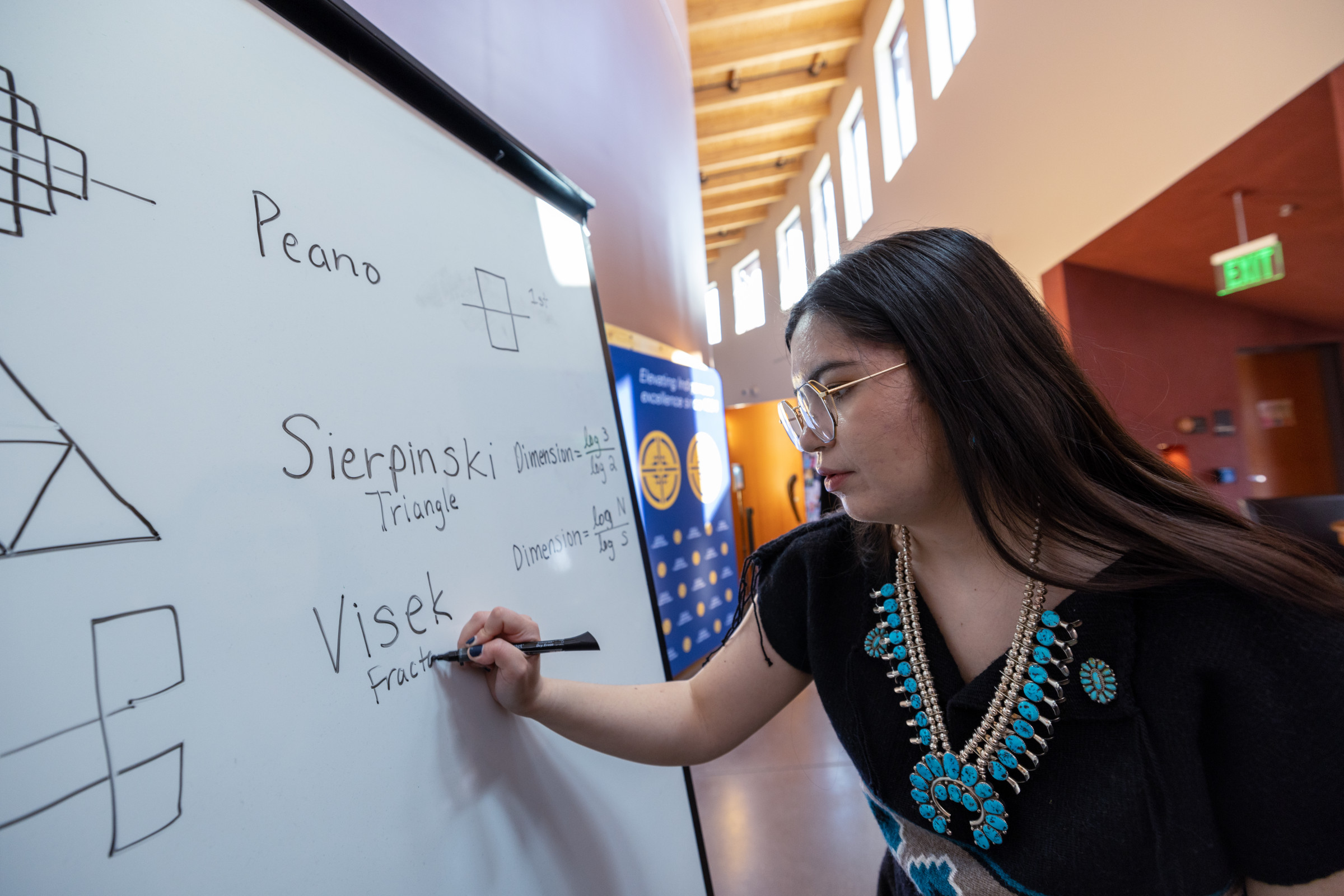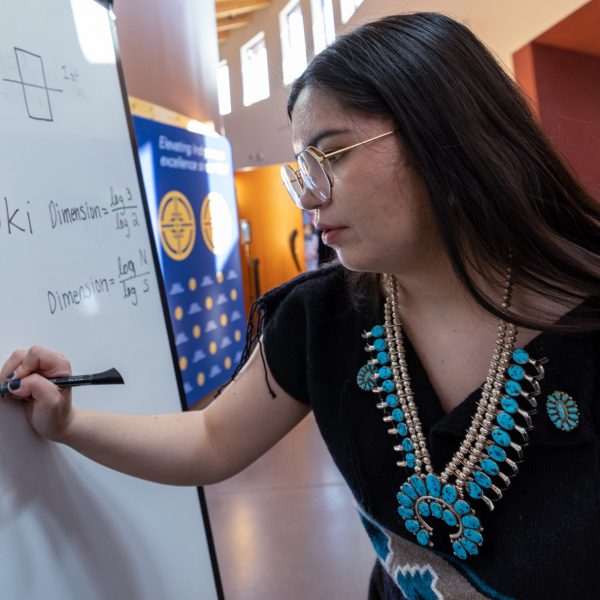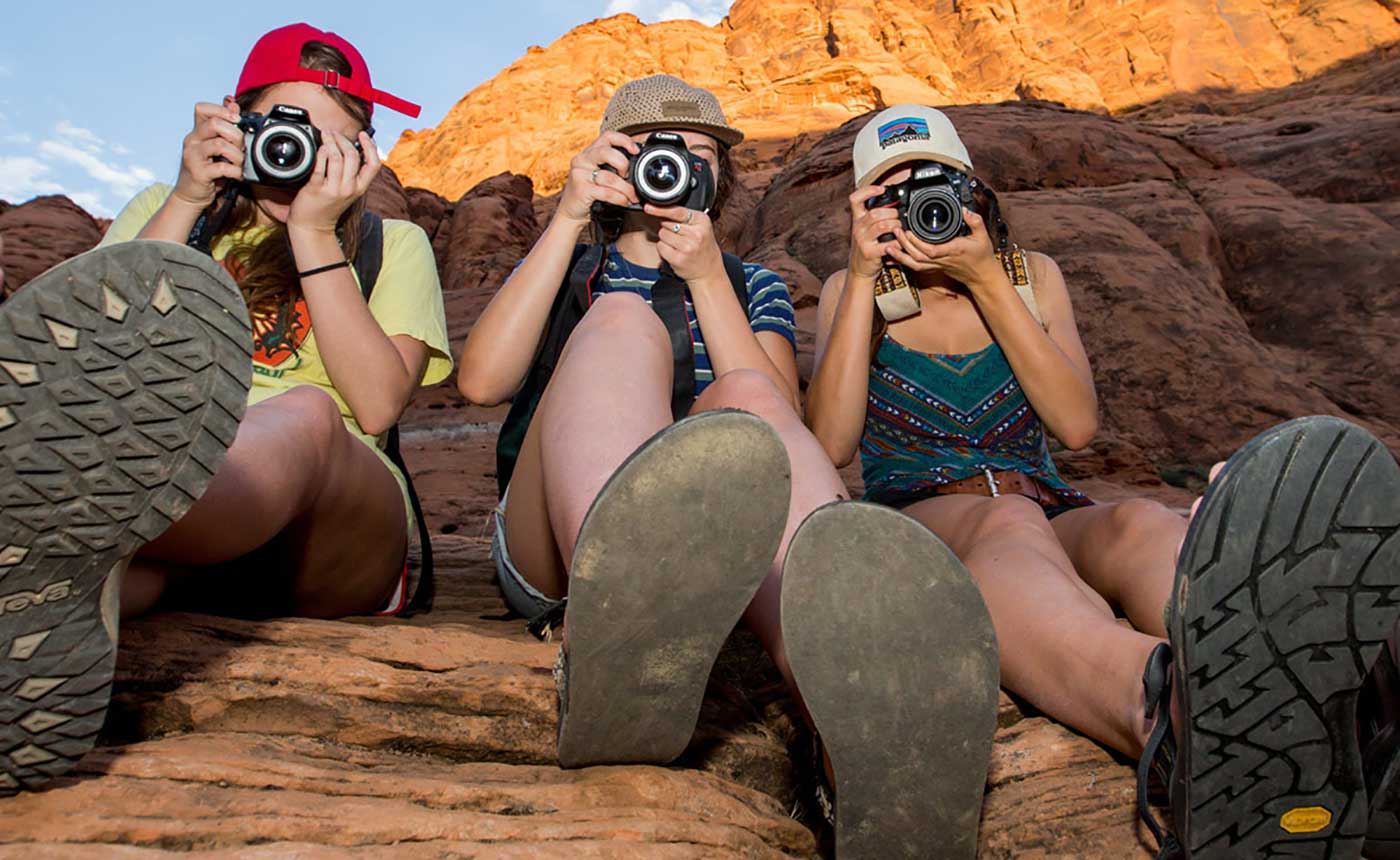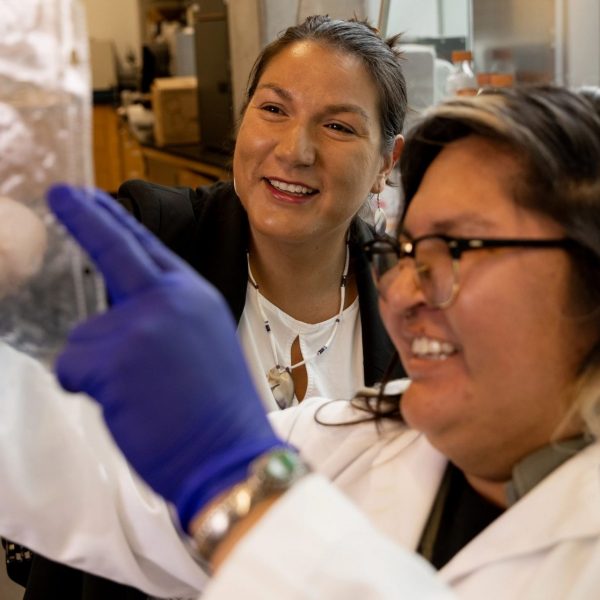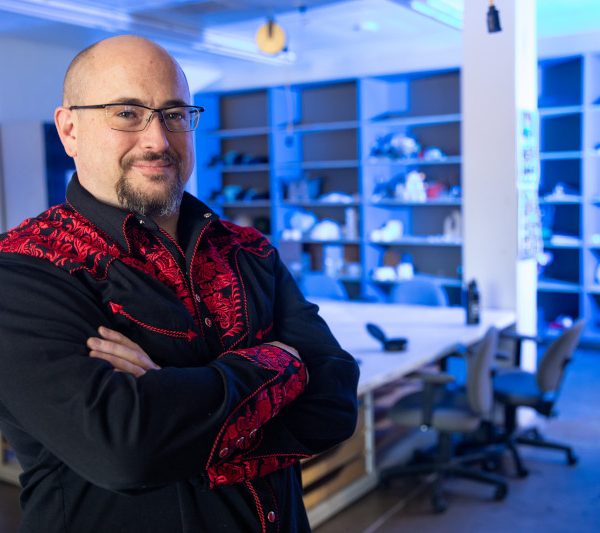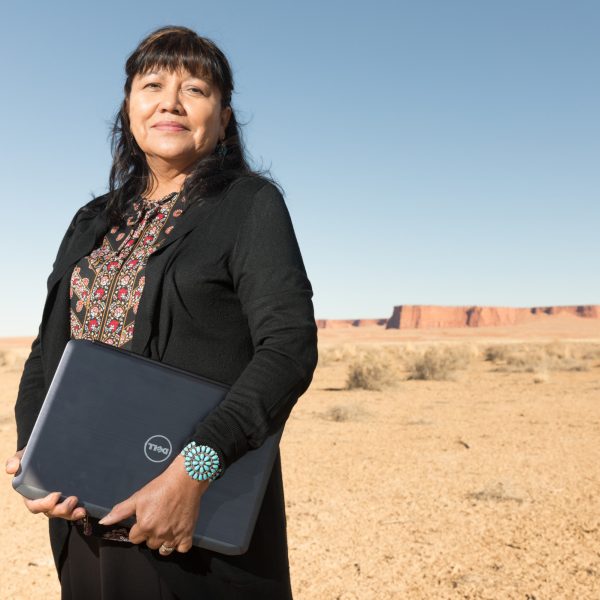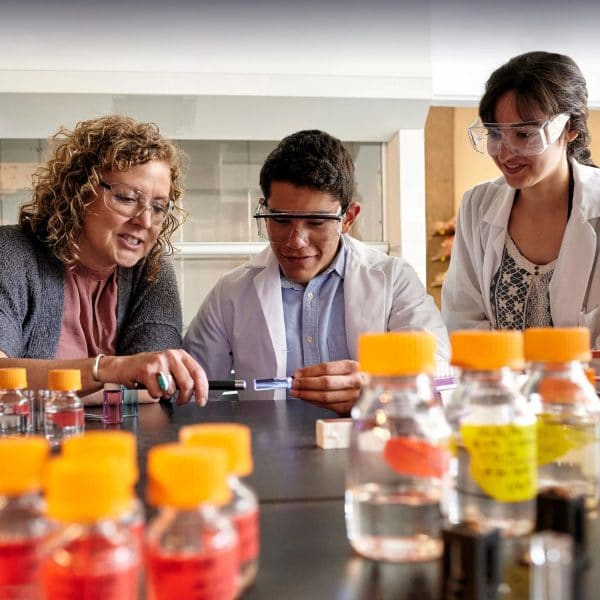NAU senior, Mathematics major, and Gold Axe Award winner Kaylin McLiverty used her undergraduate research project to explore the integration of math into traditional Navajo textiles.
The project, “Analyzing Fractals in Navajo Weaving,” drew inspiration both from McLiverty’s love of math and her appreciation of Navajo weaving instilled by family and friends. “My grandma and my aunt, they’re weavers, so I grew up looking at different rug designs and saw their process with weaving,” McLiverty explains. “I noticed a lot of geometric patterns and thought, ‘There’s got to be a mathematical connection with that,’ so I wanted to explore it further.”
Exploring Navajo weaving styles through math
She relied on various methods to conduct her research, including interviewing weavers, doing a literature review, and examining rug patterns. “Regionally, there are different rug designs across the Navajo Nation, so my eyes were already accustomed to that. I started studying and looking for the similarities of different fractals in rugs, and was able to find three different fractals in three different weaving styles,” she says.
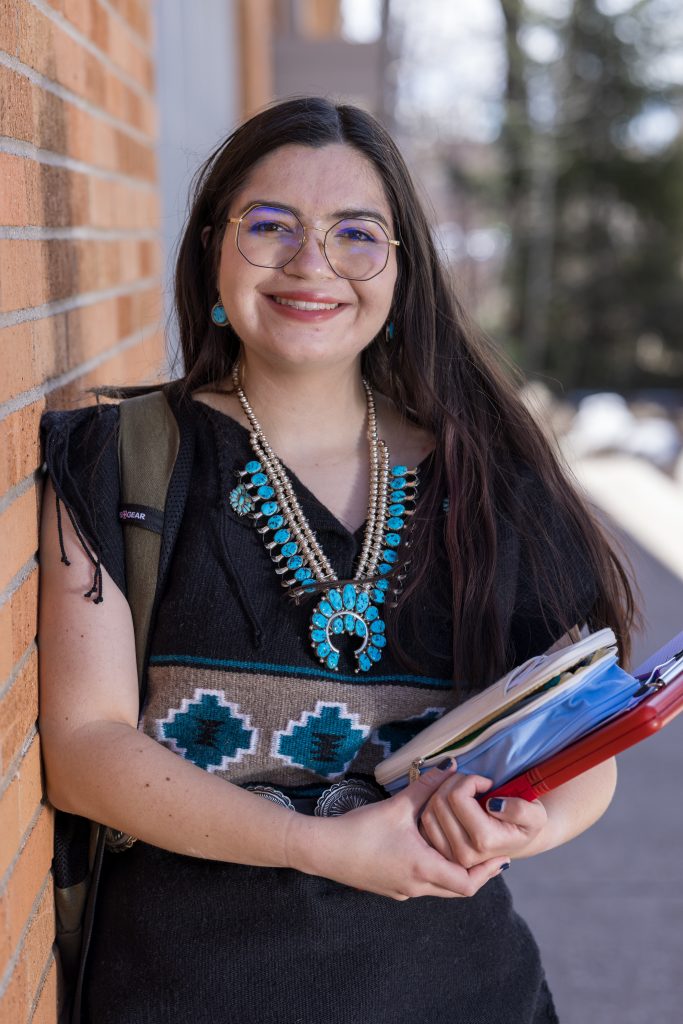
Ultimately, McLiverty found the pattern within a pattern she was looking for, analyzing fractals in the Chief’s Blanket, Two Grey Hills, and Ganado Red styles. “I was able to present them and talked about the math behind fractals, the dimensions, and defined what a fractal was,” she continues. “It was thrilling to be able to mathematically describe the patterns I was accustomed to seeing in rugs.”
The research also yielded results beyond the study of fractals. “What I learned about through this project that was quite fascinating for me was the study of ethnomathematics, which is the combination of culture and math,” McLiverty explains. “With the math and cultural connections I’ve made growing up, it was really cool to compare and see that there wasn’t just, say, Navajo, but a lot of different Indigenous groups globally that have these cultural and math connections.”
In addition to gaining a perspective of ethnomathematics in and outside Navajo culture, the project also reflected McLiverty’s individual experiences and the practical applications of math. “I think sometimes math is seen as a subject that has little to no personal connections, and people say, ‘Outside of algebra, how can I use these skills in real life?’” McLiverty says. “Being able to see what I saw growing up with weaving, the patterns, and how they were described geometrically, was remarkable.”
Indigenous peer mentoring
In addition to the results of her study, the process of undergraduate research was also a rewarding one. McLiverty completed her project as a member of the first cohort of the Honors Native American Summer Research Program. “When I first found out about this opportunity, I was excited. Not only did I get guidance from my research and peer mentors, Sarah Watson and Beyonce Bahe, but we also had workshops throughout the program as well,” McLiverty says. “We got to learn more about professional development and research methods, and were also introduced to encouraging leaders. I was a little intimidated at the thought of undergraduate research, but this program just made it seem very approachable. It was very impactful overall in my undergraduate degree because I still use the skills from that program.”
Following her experience, McLiverty was inspired to become a peer mentor herself. “My first year, I attended an Office of Indigenous Student Success event, and through that program got to meet my mentor. She was able to help me transition to NAU in terms of, ‘Oh, I don’t know where this building is, could you help me?’ or, ‘I don’t know how to locate this resource, but I’ve heard about it.’ She was just helpful. With her mentorship, I was motivated to apply to become a peer mentor later that year,” she explains.
McLiverty recommends undergraduate research and peer mentoring to other incoming students. “Now that things are transitioning back to in-person, I’ve been hosting and planning events for students; I tend to do crafting events. It’s really nice getting to interact and learn more about students and how their college experiences are going in a social setting. It’s also great to get to know students through their journey, even if it’s just the little things—it’s uplifting just to see what students are up to and how they’re adjusting,” she says.
Looking ahead, McLiverty will begin her master’s in Statistics at NAU in fall 2023, continuing a mathematical journey that began with family in early childhood—and is now growing into a successful career combining cultural heritage and scholarly research.

